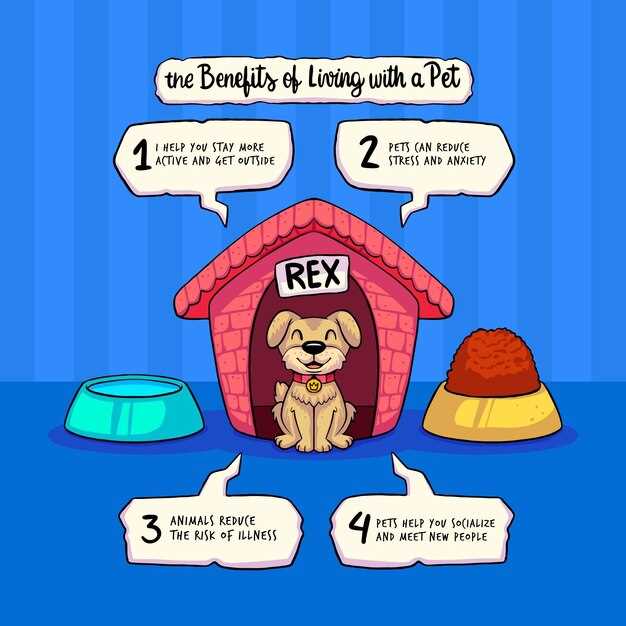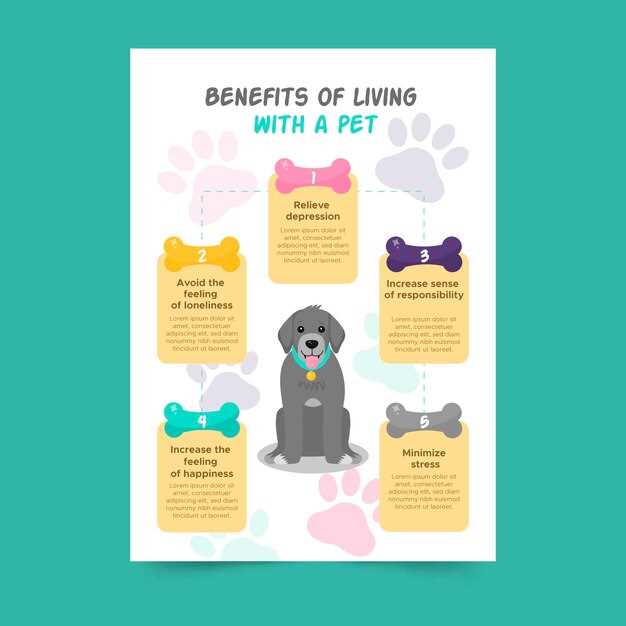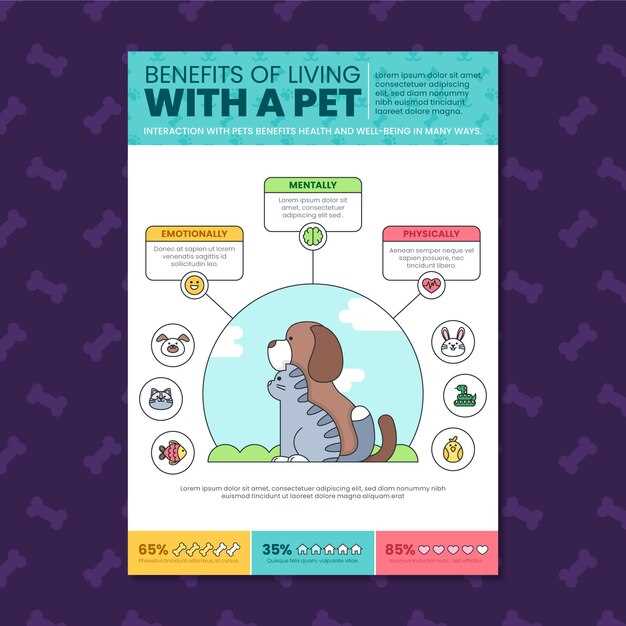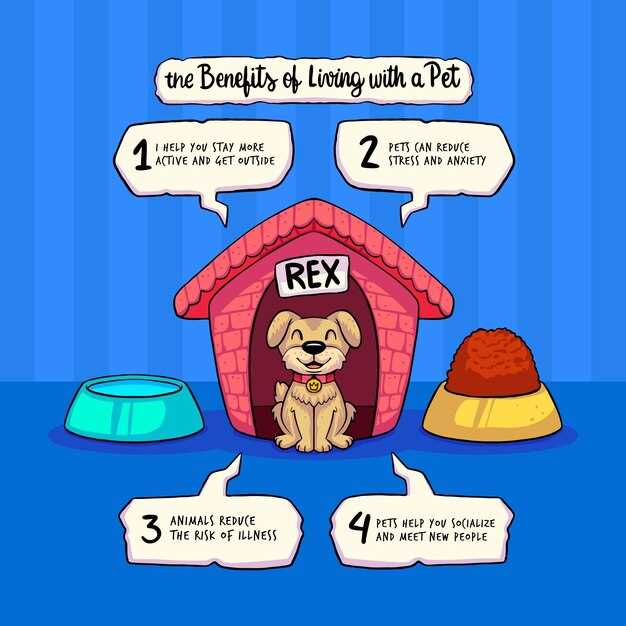Switch your puppy to adult food around their first birthday, but timing can vary based on breed and size. Small-breed dogs typically mature faster, often reaching adulthood by 9 to 12 months, while large-breed dogs might take up to 18 to 24 months. Always consult with your veterinarian to tailor the transition timeline to your dog’s specific needs.
Begin the transition gradually over a week, mixing increasing portions of adult food with the puppy’s current diet. Start with a 25% adult food to 75% puppy food ratio and increase the adult portion every two days. Monitoring your dog’s reaction during this period is crucial; any signs of digestive upset, such as diarrhea or vomiting, warrant slowing down the transition process.
Nutritional content in adult dog food differs significantly from puppy formula, focusing on maintenance rather than growth. Ensure the adult food meets all essential dietary requirements for your dog’s age, size, and activity level. Pay attention to the calorie density and adjust portion sizes to avoid weight fluctuations. Adult dogs typically require fewer calories, so maintaining a balanced diet is paramount for their overall health.
Choosing the right adult food involves considering factors such as kibble size, flavor, and specific dietary needs, like grain-free options or foods formulated for skin and coat health. Research brands and read labels, looking for high-quality ingredients and the presence of certifications from reputable agencies like the Association of American Feed Control Officials (AAFCO).
Timeline for Switching to Adult Dog Food

Begin transitioning your puppy to adult food around their first birthday. For small and medium breeds, this shift can start between 9 to 12 months. Larger breeds require a slightly longer development phase, making the ideal transition time between 12 to 18 months. It’s crucial to follow your veterinarian’s advice to ensure a smooth switch tailored to your dog’s specific needs.
The transition process should last approximately 7 to 10 days. Start by mixing 25% adult food with 75% puppy food for the first few days. Gradually increase the adult food proportion every couple of days so that by the end of the transition period, your dog is eating 100% adult food. This gradual process helps prevent digestive upset and allows your dog to adapt to the new nutrients.
Observe for any signs of discomfort or adverse reactions during the transition. Look for any changes in stool consistency, appetite, or energy levels. Consult your veterinarian if you notice any concerning symptoms. It’s also a good time to measure portion sizes and adjust feeding frequency according to adult dog feeding guidelines.
Regularly monitor your dog’s weight and adjust portions to maintain a healthy weight. Adult dogs generally require fewer calories than growing puppies, so avoiding overfeeding is essential. Providing balanced nutrition supports maintenance of ideal body condition and long-term health.
Identifying the Right Age for Transition
Switch to adult dog food when your puppy reaches about 80% of their expected adult size. Generally, this occurs between 9 to 12 months for small breeds and up to 24 months for larger breeds. Regular check-ups with your veterinarian will help confirm the ideal time for this transition. Be alert to physical changes, such as the slowing down of growth rate and a shift in behavior that suggests increased maturity.
- Small Breeds: Change diet typically at 9 to 12 months.
- Medium Breeds: Transition at around 12 to 14 months.
- Large Breeds: Consider starting between 18 to 24 months.
Observe signs like diminished appetite for puppy food or gastrointestinal changes, indicating readiness for adult food. Adjust feeding routines slowly to prevent digestive issues, mixing increasing amounts of adult food with the puppy’s current diet over about ten days.
- Day 1-3: Mix 75% puppy food with 25% adult food.
- Day 4-6: Combine equal parts puppy and adult food.
- Day 7-9: Mix 25% puppy food with 75% adult food.
- Day 10: Complete the switch to adult food.
Consult your veterinarian to tailor the timing and method to your individual dog’s needs. This careful approach minimizes stress and supports their continued healthy growth and energy levels.
Recognizing Breed-Specific Differences
Begin by consulting your veterinarian to understand the unique needs of your breed. Larger breeds like Great Danes and Mastiffs often benefit from transitioning to adult food at around 12 to 15 months to prevent rapid growth, which can strain developing joints. Smaller breeds such as Chihuahuas and Pomeranians may mature faster, sometimes transitioning as early as 9 to 12 months due to higher metabolic rates.
Monitor your puppy’s weight closely. Large and giant breeds require careful balance in their diet to prevent developmental orthopedic issues. Opt for foods that support steady growth rates, avoiding excess calories. On the other hand, smaller breeds require a nutrient-dense food, given their energetic nature and smaller stomach size, to maintain energy levels throughout the day.
Consider specific nutrient requirements. Certain breeds, like Golden Retrievers, are more prone to heart issues and may benefit from foods rich in taurine. Consult with your vet to tailor your dog’s diet to breed-specific health concerns. Additionally, high-energy breeds such as Border Collies or Australian Shepherds might need more protein to sustain their active lifestyle.
Observe your puppy’s eating habits and adjust accordingly. Breeds like Bulldogs may face digestive sensitivities, hence a gradual transition over a few weeks can help ease the process. Measure portions according to breed guidelines and adjust if you notice weight gain or loss.
Taking into account these breed-specific differences ensures you support healthy development tailored to your pet’s needs. Regular veterinary check-ups will also guide you in making informed decisions about the transition timeline and food choices specific to your breed.
Health Signs Indicating Readiness
Begin by observing your puppy’s weight gain and body condition. Most puppies are ready to transition to adult food when they’ve reached about 80% of their expected adult size. Check with your veterinarian to estimate your puppy’s ideal weight based on their breed.
Monitor the development of their dental health as puppies typically start losing their baby teeth around four months of age. Once most of the adult teeth have erupted, it’s a sign they’re mature enough to handle the denser texture of adult kibble.
Evaluate their activity level and energy needs. As puppies mature, their energy requirements may decrease slightly, aligning more closely with the balanced nutritional profile of adult dog food. If your puppy stays active without gaining excess weight, it’s time to consider the switch.
Keep an eye on your puppy’s digestion. Consistent and firm stools are indicators of a healthy digestive system ready for the transition. If your puppy experiences digestive issues, consult your veterinarian before making any dietary changes.
An overall assessment of their growth milestones, including muscle tone and coat condition, can also guide the transition. A shiny coat and solid muscle development indicate readiness. Always consult with a veterinarian to tailor the food transition to your puppy’s specific health and developmental needs.
Creating a Transition Schedule
Switch your puppy to adult food gradually over a seven to ten-day period. Begin by mixing 25% adult food with 75% puppy food for the first two to three days. Observe your dog’s digestion and energy levels, ensuring they adjust well.
Increase the proportion to 50% adult food and 50% puppy food over the next two to three days. Monitor any changes in behavior or stool quality. A smooth transition minimizes digestive issues and ensures continued growth and vitality.
For the final two to three days, mix 75% adult food with 25% puppy food. Keep an eye on your pup’s eating habits and overall health. A consistent schedule helps your dog adapt easier to the new diet without stress.
- Aim for three feeding times a day, gradually reducing to twice daily as your dog grows.
- Ensure fresh water is always available, especially during this transition phase.
- Always use a high-quality adult dog food suited to their breed size and energy needs.
Adjust the timeline if any adverse reactions occur, consulting your veterinarian when needed. Tailor the schedule to your dog’s unique needs for a seamless transition to adult food.
Practical Tips for a Smooth Diet Transition

Gradually introduce the new food by mixing it with your puppy’s current diet. Start with a ratio of 25% new food to 75% old food. Over the span of a week, incrementally adjust the ratio until the new food makes up 100% of the diet.
Observe your dog’s behavior and health during this period. Look for signs of digestive issues, such as diarrhea or vomiting, which may indicate sensitivity to the new food. If problems persist, consult your veterinarian.
Ensure the new food meets all nutritional needs based on breed, size, and activity level. Look for high-quality ingredients and appropriate protein content to support their growth and energy requirements.
Consistent meal times help your puppy adjust to the new diet. Stick to regular feeding schedules, and avoid giving too many treats, which can disrupt their appetite and nutritional balance.
Encourage hydration, as it aids digestion during the transition. Always provide fresh water alongside meals and observe if your puppy is drinking enough.
Patience is key. Every pup is unique, and some may take longer to adjust. A slow and steady approach minimizes stress and ensures a successful transition, promoting a healthy start as your puppy grows into adulthood.
Selecting the Appropriate Adult Dog Food
Choose a dog food that lists meat, such as chicken or beef, as the first ingredient. Protein is crucial for maintaining their energy and muscle mass. Look for a balanced nutrient profile, focusing on protein, fats, and carbohydrates in the right proportions.
Prioritize brands that avoid artificial preservatives, flavors, and colors. Natural preservatives like tocopherols (vitamin E) are healthier alternatives. Check for the AAFCO statement on the packaging, confirming the food is nutritionally complete and balanced.
Check the calorie content to match your dog’s size and activity level, preventing obesity or malnutrition. Here’s a basic guideline:
| Dog Size | Calories per Day |
|---|---|
| Small (up to 20 lbs) | 400-600 |
| Medium (20-50 lbs) | 600-1200 |
| Large (50-100 lbs) | 1200-2000 |
| Giant (100 lbs and over) | 2000-3500 |
Consider any specific health needs, like weight control or sensitive stomachs, and select a formula that addresses those concerns. Consulting with a veterinarian can provide personalized recommendations based on your dog’s health history.
Gradual Transition Techniques
Introduce new adult food by mixing a small portion with your puppy’s current food, approximately 25% new food to 75% old. Gradually increase the amount of adult food over the course of 7 to 10 days, adjusting the ratio daily until your pet eats only adult food. Maintain consistency in feeding times to help the dog adjust to the new diet.
Observe your puppy’s reaction to the new food. Monitor for any signs of digestive upset, such as diarrhea or vomiting, which might indicate a need to slow down the transition. Adjust the mix and extend the transition period if needed. This approach minimizes the stress on your pet’s digestive system.
Ensure plenty of fresh water is available to support digestive health. Hydration plays a key role in this phase, aiding digestion and nutrient absorption. Additionally, consult with a veterinarian if concerns arise, especially if any health conditions could affect the transition strategy.
Choose a similar flavor or ingredient base as the puppy food to facilitate acceptance. This familiarity simplifies the process and encourages a smoother adjustment. Consider incorporating rewards and praise during meal times to positively reinforce the new diet.
Monitoring Digestion and Health During Transition
Observe stool consistency. A sudden change in your puppy’s stool can indicate digestive issues. Soft or watery stools may suggest an intolerance to the new food, requiring a slower transition or consultation with a veterinarian.
- Maintain hydration: Ensure your puppy is drinking enough water, especially if you notice signs of dehydration like sunken eyes or lethargy.
- Track appetite: Monitor eating habits closely. A significant decrease in appetite can suggest that the new diet doesn’t agree with them.
- Check for vomiting: Occasional vomiting may not be alarming, but frequent vomiting necessitates a dietary review.
- Look for body condition changes: Sudden weight loss or gain can indicate the need for a diet adjustment.
- Monitor energy levels: A drop in energy levels or activity might signal that the nutritional content of the new diet doesn’t meet your puppy’s needs.
Seek professional advice if you notice any concerning symptoms lasting over a few days. Regular vet visits provide reassurance and help address dietary issues before they become critical.
Dealing with Allergies and Sensitivities
Identify specific food items causing reactions by introducing new ingredients one at a time. Start with a limited-ingredient diet containing a single protein source and a simple carbohydrate. Keep a journal to track any changes in your dog’s condition, noting symptoms such as itching, gastrointestinal issues, or behavioral shifts. Consult your veterinarian for allergy tests if reactions persist despite dietary adjustments.
When selecting dog food, scrutinize labels carefully. Look for names of specific proteins and avoid generic terms like ‘meat meal.’ If possible, choose products certified as hypoallergenic, which often exclude common allergens like beef, chicken, and dairy. Consider novel protein sources such as venison, duck, or fish.
| Common Allergens | Alternative Options |
|---|---|
| Beef | Lamb or Venison |
| Chicken | Duck or Turkey |
| Grains | Sweet Potato or Peas |
| Dairy | Pumpkin or Butternut Squash |
Incorporate omega-3 and omega-6 fatty acids through supplementation or through food sources like fish oil, which can help reduce inflammation and improve skin health. Always introduce supplements gradually and under the guidance of a vet to avoid adverse effects.
Regularly inspect your dog’s skin and coat for any signs of irritation or changes. Adjust grooming routines to include hypoallergenic shampoos designed to soothe sensitive skin, reducing the risk of irritation caused by fragrances or harsh chemicals.
Q&A:

At what age should I transition my puppy to adult dog food?
The age to transition your puppy to adult food can vary depending on the breed and size of your dog. Generally, smaller breeds tend to mature faster and can switch to adult food around 9 to 12 months of age. Medium-sized dogs usually make the transition around 12 months, while larger breeds might not be ready until 12 to 18 months. It’s best to consult with your veterinarian to determine the right time for your specific pet.
How can I make the switch from puppy food to adult food smoothly?
To make the transition easier on your dog’s digestive system, it’s advisable to do it gradually over a week or so. Start by mixing a small amount of adult dog food with their puppy food. Gradually increase the proportion of adult food over several days. Observe your dog for any signs of digestive upset, like diarrhea or vomiting, and slow the transition if needed.
Is adult dog food different from puppy food, and if so, how?
Yes, adult dog food is quite different from puppy food. The primary difference lies in the nutritional content. Puppy food is formulated with higher levels of protein and calories to support growth and development. It also contains certain nutrients that are crucial for bone development and immune system support. Adult dog food, on the other hand, is designed to maintain health and provide balanced nutrition without excess calories that could lead to obesity.
What are some signs that my puppy is ready for adult dog food?
Some signs that your puppy might be ready to switch to adult food include reaching their adult size or weight, a decrease in their growth rate, and showing less interest in their meals for puppies. Consulting with your vet is always a good idea to confirm that it’s the right time for the switch, as they can also verify your dog’s overall health and readiness for adult nutrition.
Can I continue feeding puppy food to my dog once they are an adult?
Feeding a dog puppy food after they have matured is generally not recommended. Puppy food is richer in calories and nutrients to support growth, which can lead to weight gain and potential health problems if given to an adult dog. Once your dog has reached maturity, it is better to provide them with food specifically designed for adult dogs to ensure they receive the appropriate balance of nutrients for their age.
How do I know when it’s the right time to switch my puppy to adult food?
The appropriate timing for transitioning your puppy to adult food largely depends on the breed and size of your dog. Generally, small-breed puppies can be switched to adult food around 9 to 12 months of age, while larger breeds may need to stay on puppy food until 12 to 18 months. It’s crucial to monitor your puppy’s growth and consult with your veterinarian to determine the best time for this transition. They will consider factors like weight, health condition, and activity level to give you a personalized recommendation.
